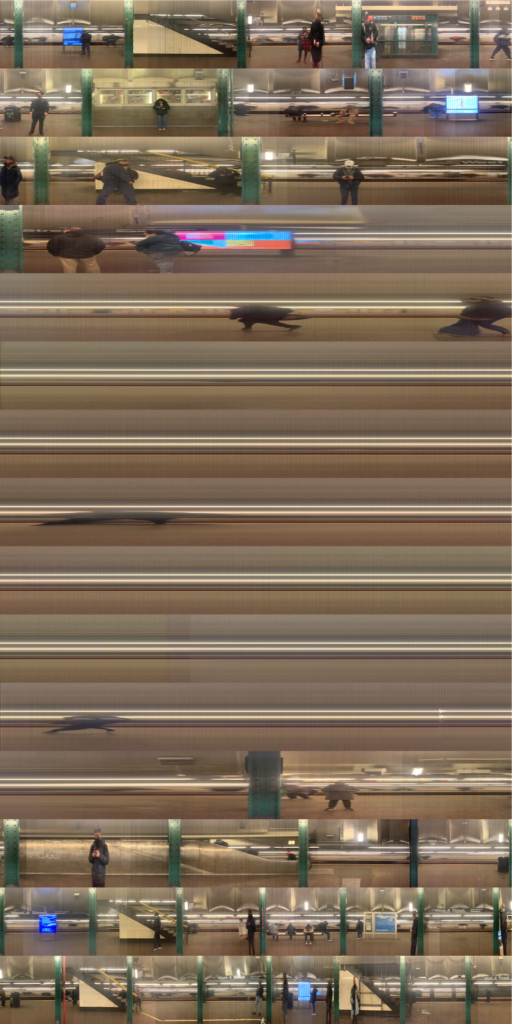En Route
About This Project
En Route captures everyday motion by scanning a single slit of a moving image, a technique known as slit-scanning. This allows us to build a still image of moving subjects, and/or be moving and capture a still image over time. The result of the algorithm is difficult to predict but almost always intriguing because neither of those visual scenarios is what our brains are trained to construct.
The N Train on Manhattan Bridge – Recorded on the B Train
With the train moving at a constant speed, the train appears flat. The cars, moving at a faster speed than the horizontal pixel increment in the algorithm, appear crunched up.
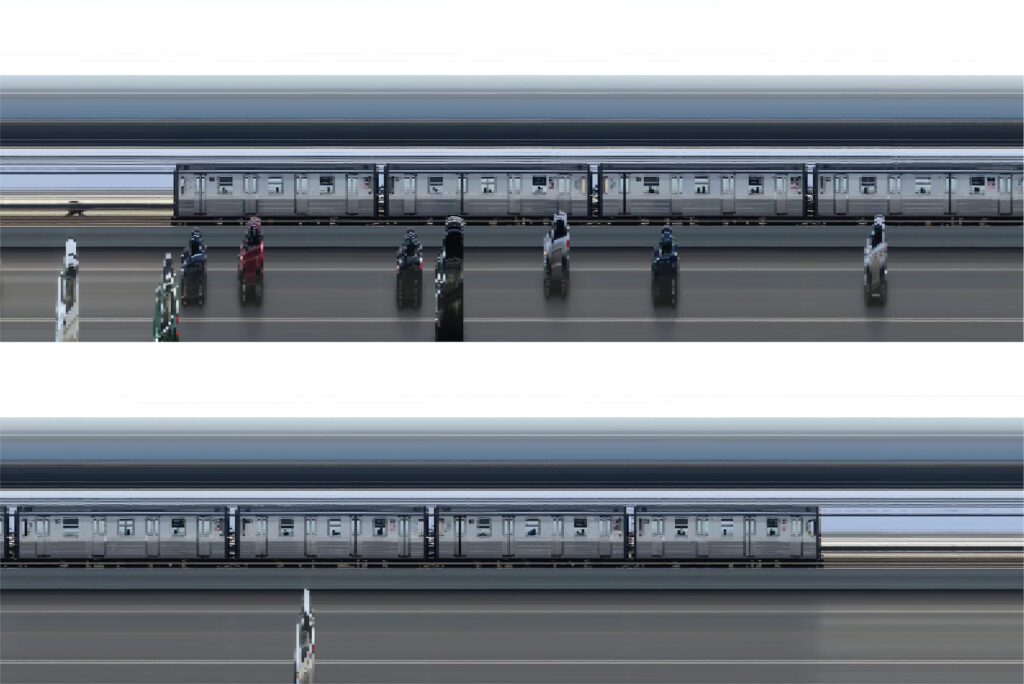
This is an illustration of how the algorithm works and how the image is built over time. The source video is on the left. The red in the middle of it is where the sketch is drawing from.
NQRW Trains at Times Square – 42 Street (source video)
Here are three overlapping trains. I have always been interested in the counterpoint relationship between the trains — standing on one end and watching trains arrive and depart in sync, slightly off each other, continual of each other, etc. We can see that here, as well as the pedestrian artifacts, walking in and out on different platforms.
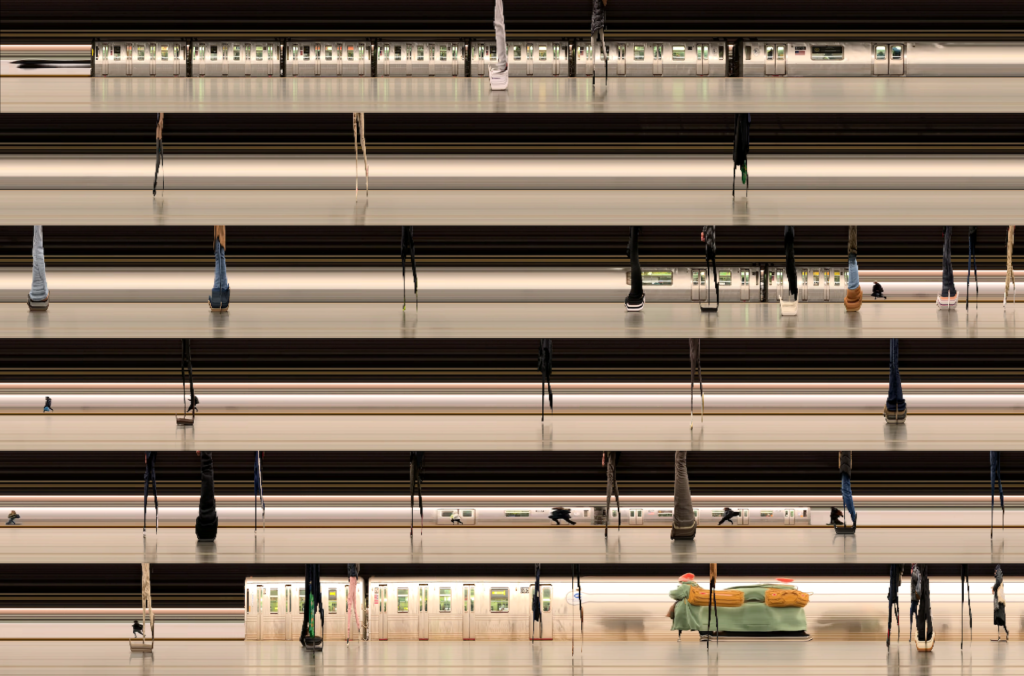
34 St Herald Square BDFM Downtown Escalators (source video)
This is a more quantitative view of the algorithm. Pedestrians moving on an escalator during morning rush hour. The original video presents two escalators, going up and going down, which translates into different sized figures. Each row is one minute of recording. We can see here that between 08:32-08:41 AM (top image) and 08:46-08:55 AM (bottom image), more people are traveling into 34 St Herald Square, going up the escalators. If we were to do this for a whole day, the opposite pattern is likely to appear during the evening rush hour where people going down the escalators are dominant.
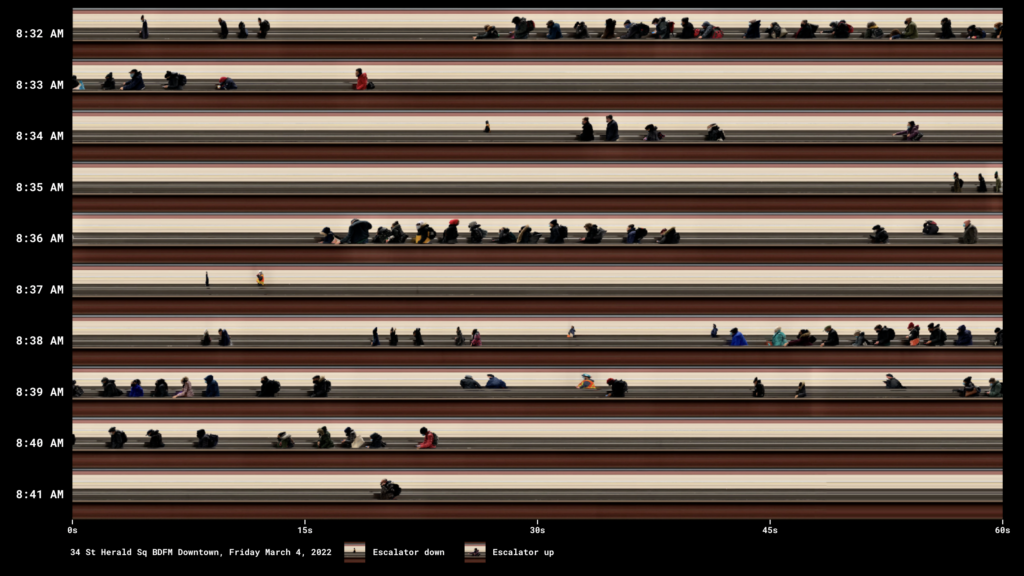
34 St Herald Square BDFM Uptown Escalators (source video)
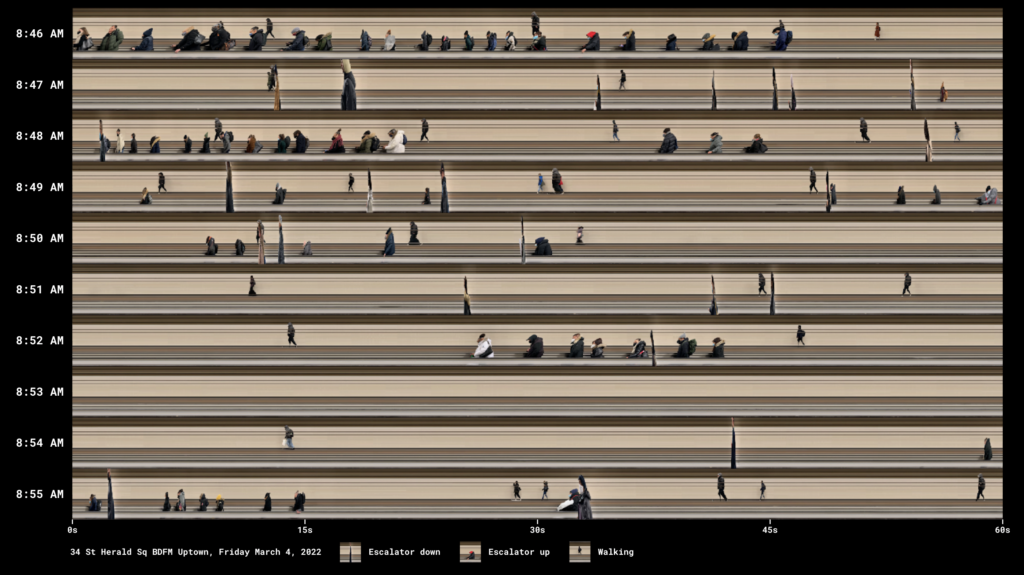
High Street Station Escalators (left: source video) (right: source video)
This is a different view of the escalator where I am also moving, in the opposite direction of the subjects. The left image is me going up, others going down. The right is me going down, others going up. The fascinating thing here is that the beams at High St train station are perpendicular to the ground instead of to the escalator. This creates a unique diagonal visual for the piece.
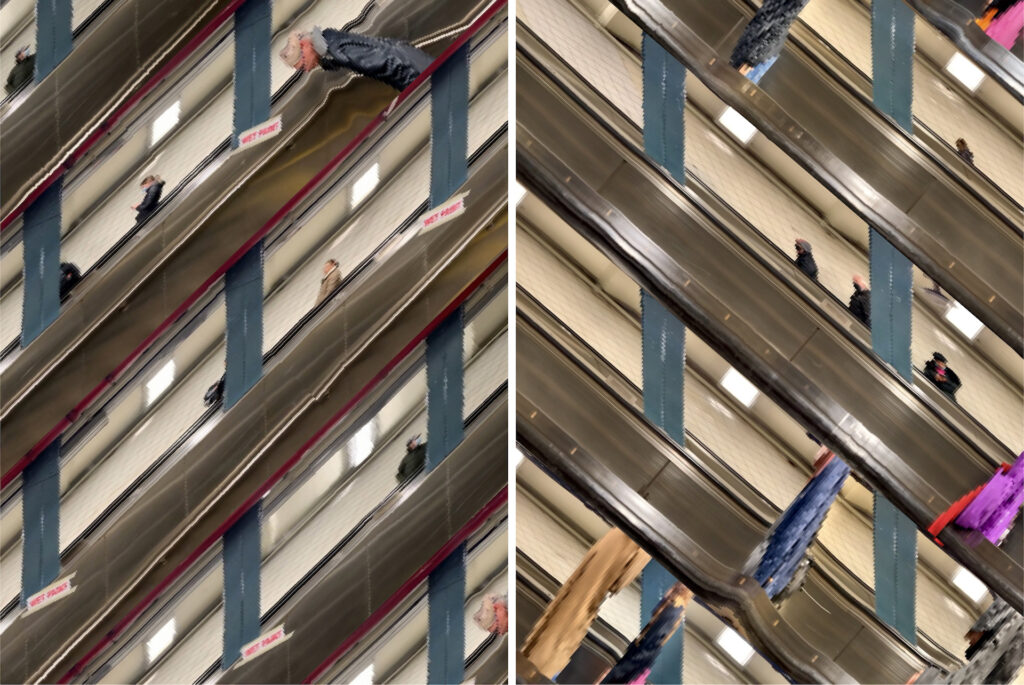
Hudson Yards Escalators (source video)
Instead of looking at the escalators from the sides, this piece looks directly at the escalator landing. Here, the motion is very apparent. Although the escalator is moving at a constant speed, some people are walking, and some standing. The direction of the escalator also causes the people to appear upside down. The distortion of the image further highlights the possibilities of new ways of seeing and making sense of our surroundings beyond our usual visual construct.
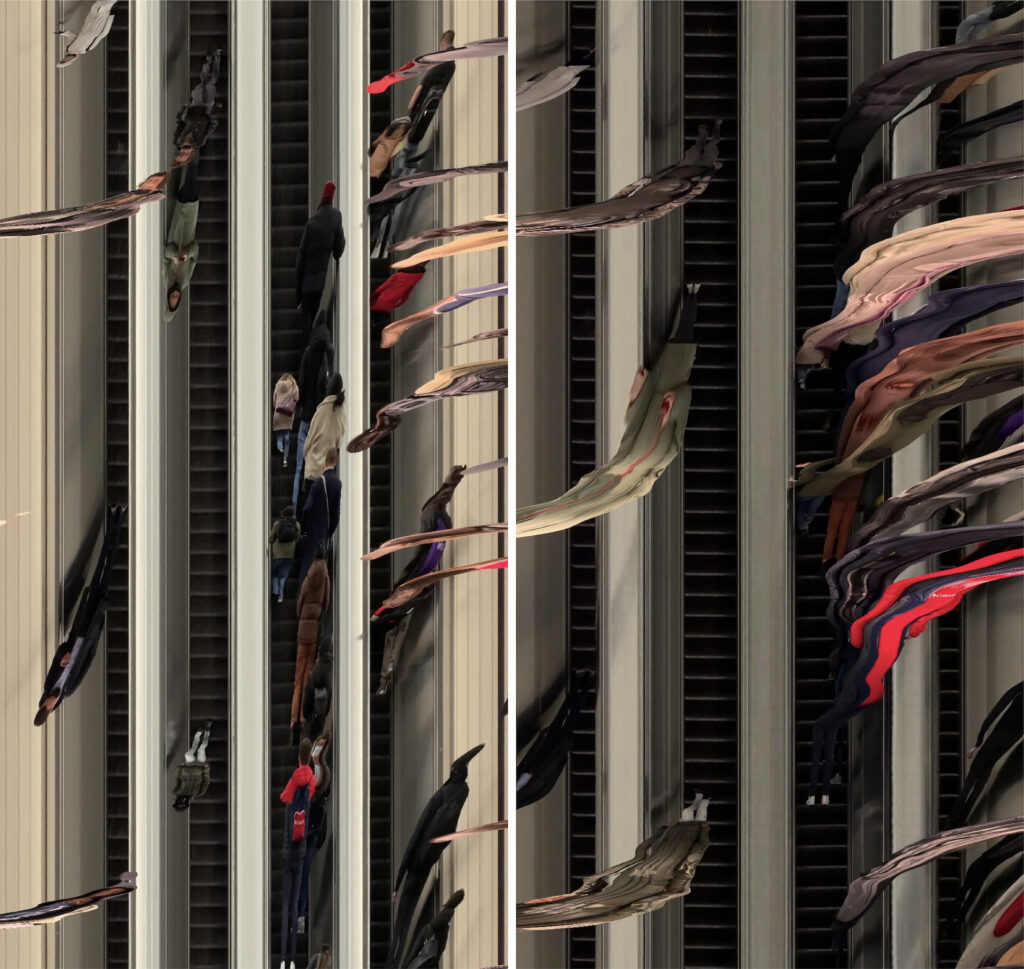
Arriving and Leaving W4 St Station (source video)
Friends who are familiar with the algorithm are often amused by this piece. This is taken inside a train while arriving, picking up pedestrians, and departing West 4 station. The motion of the train governs the apparent stretchiness of the visual. Even though the platform beams are technically the same distance apart, here, the distances appear to be increasing and decreasing.
